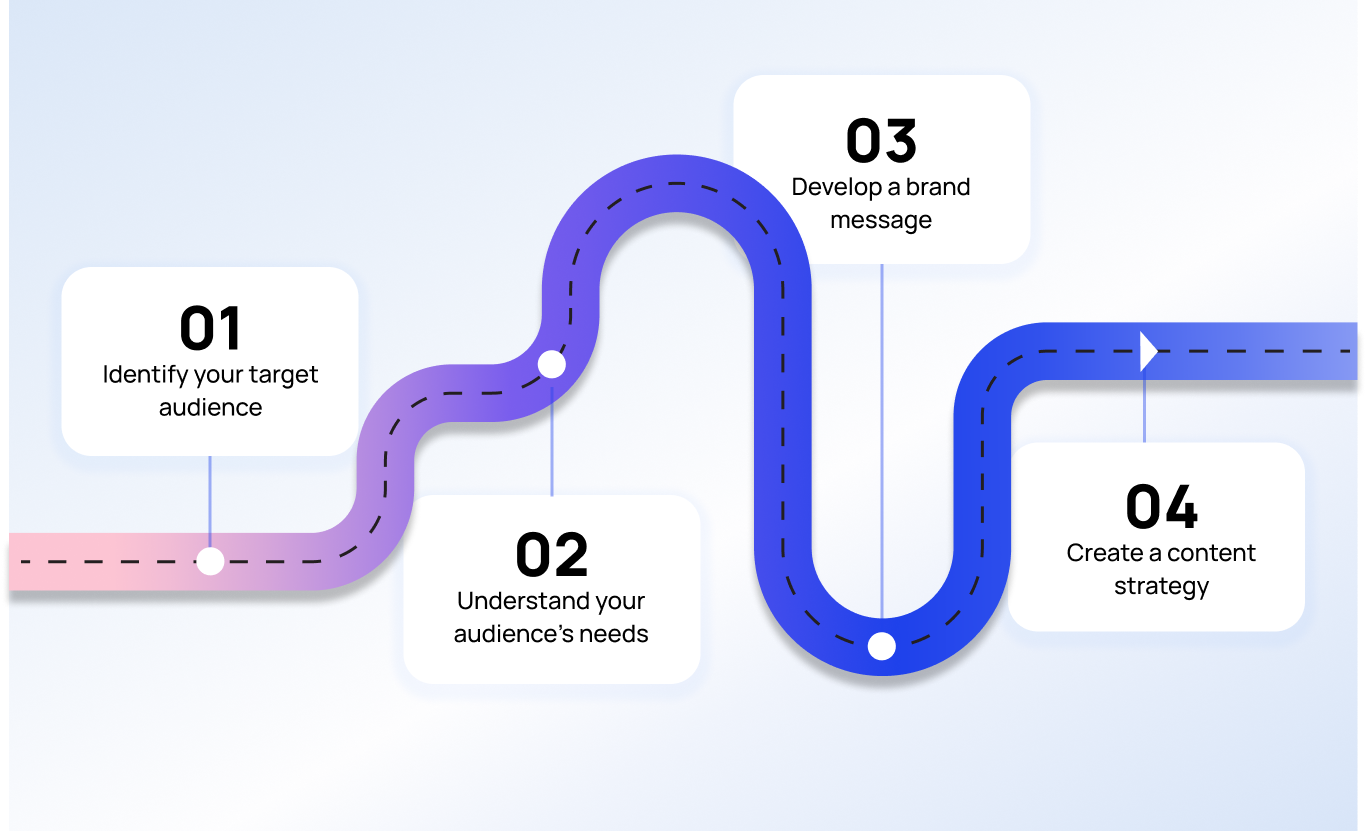So you’re managing a new pharmaceutical product that has a lot of promise. How do you take that promise to build a strong brand that your target patients and physicians will be confident in and start using? Beyond just confidence, how do you differentiate your new drug from established products that doctors, hospitals and payers are already comfortable prescribing and providing access to? Pharmaceutical brand building is a process of creating a unique and memorable brand identity for your drug that resonates with healthcare professionals, patients, and other stakeholders. It involves developing a brand strategy that effectively communicates the drug’s outcomes, rational, emotional and clinical benefits. Here are some key elements of pharmaceutical brand building:
Define your brand identity
To build a strong pharmaceutical brand, you need to define your brand identity. This involves developing and understanding the brand personality, brand promise, and pharmaceutical brand positioning that aligns with patients’ and HCPs’ needs. The brand’s personality, to a large degree, can reflect what the drug is and is not relative to existing treatments. The brand’s promise should communicate what the drug offers in terms of efficacy and safety, or other clinical attributes. Your brand’s positioning should detail how the drug differentiates from its competitors.
Defining your brand identity is a crucial first step in pharmaceutical brand building. A strong brand identity can help your company stand out in a crowded market, establish credibility, and build trust with your target audience. Here are some key elements to consider when defining your pharmaceutical brand identity:

1.Brand personality – Your brand personality is the human characteristics associated with your brand. It is how you want your target audience to perceive your brand. In the pharmaceutical industry, brand personalities can range from caring and compassionate to innovative and cutting-edge. Defining your brand personality helps you create a consistent tone of voice and messaging across all your marketing channels.
2. Brand promise – Your brand promise is a statement that communicates what your product promises to deliver to its customers. It should be unique, relevant, and memorable. In the pharmaceutical industry, brand promises can include a commitment to quality, safety, and efficacy, among other clinical attributes. Defining your brand promise helps you align your marketing messaging and activities.
3. Brand positioning – Your brand positioning is how you differentiate your company’s products and services from its competitors. It should be relevant, distinctive, and meaningful to your target audience. For a new drug, brand positioning can be based on a target patient population, or treatment approach. Defining your brand positioning helps you create a competitive advantage and stand out in a crowded market.
Develop a comprehensive brand strategy
A comprehensive brand strategy is critical for pharmaceutical brand building. This involves identifying your target audience – both patients and physicians – understanding their needs and preferences, and developing a brand message that resonates with them. Your brand message needs to be clear, concise, memorable, and effectively communicate the drug’s benefits. Here’s where a solid market research plan can really help identify what your target audience’s needs are given that there are typically already established treatments in the market.
A comprehensive brand strategy provides a roadmap for your company’s brand development and helps you communicate your brand message effectively to your target audiences. Consider the following when when developing a comprehensive brand strategy:

4. Identify your target audience – Your target audience is the group of people you want to reach with your brand message. Identifying your target audience among healthcare professionals, patients, caregivers, and other stakeholders helps you understand their needs and preferences and tailor your brand message to their specific interests.
5. Understand your audience’s needs – To develop an effective brand strategy, you need to understand your target audience’s needs and preferences. This involves conducting market research in pharma and gathering insights about your audience’s attitudes towards your company and its products and services. Understanding your audience’s needs helps you create a brand message that resonates with them and communicates your company’s value proposition effectively.
6. Develop a brand message – Your pharma brand message is a concise statement communicating what your drug offers and why it is unique. Your brand message should communicate your brand’s outcomes and how the drug is differentiated from established background therapies and new competitors.
7. Create a content strategy – A content strategy outlines how you will use content to communicate your brand message to your target audience. It includes a plan for creating and distributing content across all your marketing channels. As you prepare to launch your new drug, your content strategy should include creating educational content for healthcare professionals, patient stories, and developing conceptual cross-channel campaigns.
Build trust with stakeholders
Trust is essential for pharmaceutical brand building, as it can significantly impact patients’ and healthcare professionals’ decisions to use your new drug. To build trust, you need to demonstrate your commitment to quality, safety, and efficacy, as well as through your communications with stakeholders. This includes being transparent and providing accurate and up-to-date information about the drug. Drug companies often start building trust with their stakeholders well ahead of launch through disease state education campaigns. But there are other methods as well.
8. Emphasize safety and quality – The most obvious and effective way to build trust with with stakeholders is to launch a safe product that works effectively. Companies should also prioritize transparency and communicate openly about their safety and quality processes.
9. Build relationships with key opinion leaders – Key opinion leaders, such as influential healthcare professionals and patient advocates, should be a cornerstone to building trust with stakeholders. Building relationships with these individuals and involving them in key decision-making processes helps pharmaceutical brands build credibility and trust.
10. Prioritize patient-centricity – Patient centricity has been a buzzword within the pharma industry for more than a decade. But prioritizing patient-centricity has proven beneficial to building trust within this key stakeholder group. This includes involving patients in the drug development process, providing patient education and support, and prioritizing patient safety and satisfaction.
11. Engage with stakeholders regularly – Regular engagement with stakeholders is critical for building trust. This includes listening to feedback, responding to questions and concerns, and communicating proactively about new developments and changes.
Measure and optimize your brand performance
Measuring and optimizing your brand performance is essential for pharmaceutical brand building. This involves tracking key performance indicators (KPIs), such as brand awareness, engagement, and loyalty, and using the insights gained to improve your brand strategy and tactics. It also involves staying up-to-date with industry trends and regulatory changes and adjusting your brand strategy accordingly. Market research can help here as well. You can use patient trackers and ATU studies to monitor your brand’s performance within key stakeholder groups.
By regularly tracking and analyzing key performance indicators (KPIs), pharmaceutical brands identify areas of strength and weakness, adjust their strategies accordingly, and improve their brand’s overall performance. Optimizing your brand performance should incorporate the following elements:
12. Identify relevant KPIs – The first step in measuring your brand performance is to identify relevant KPIs. These can include metrics such as brand awareness, customer satisfaction, sales revenue, market share, website traffic, social media engagement, and more. By selecting the right KPIs, you and your brand team can focus your measurement efforts on the most important areas of the brand’s performance.
13. Establish baseline metrics – Before you can measure the effectiveness of your brand-building efforts, you need to establish baseline metrics. This involves measuring your KPIs at the beginning of your brand-building campaign to establish a benchmark for comparison. By regularly measuring and comparing your KPIs against this baseline, you can track your progress and identify areas for improvement.
14. Regularly track and analyze your KPIs – Once you have established your baseline metrics, you need to regularly track and analyze your KPIs. Conducting regular awareness, trial and usage studies allows you to track key performance data directly from stakeholder groups. By analyzing this data, you can gain insights into how your brand is performing, where you need to improve, and what strategies are working best.
15. Adjust your brand-building strategies – Based on your analysis of your KPIs, you may need to adjust your brand-building strategies to optimize your performance. This may mean changing your messaging, adjusting your marketing channels, or improving your customer experience. By continually optimizing your strategies based on your KPIs, you can improve your brand’s performance and stay ahead of the competition.
16. Measure and optimize continuously – Finally, it’s essential to measure and optimize your brand performance continuously. You will need to regularly review your KPIs, adjusting your strategies, and track your progress over time. By making continuous improvements to your brand-building efforts, you can ensure that your brand stays relevant, effective, and successful over the long term.
Measuring and optimizing your brand performance supports your pharmaceutical brand building goals. By identifying relevant KPIs, establishing baseline metrics, regularly tracking and analyzing your performance, adjusting your brand-building strategies, and measuring and optimizing continuously, you can build a strong, successful, and competitive pharmaceutical brand.
Pharmaceutical brand building is essential for differentiating a company’s products and services from its competitors and building trust with stakeholders. By defining your brand identity, developing a comprehensive brand strategy, establishing a strong online presence, building trust with stakeholders, and measuring and optimizing your brand performance, you can create a strong pharmaceutical brand that effectively communicates your brand’s key attributes in ways that resonate with your target audience.
Elio Evangelista is a Senior Consultant at ZoomRx . His experience includes market research, benchmarking, marketing, and journalism. Email Elio at elio.evangelista@zoomrx.com
Get in touch with us for more information.


